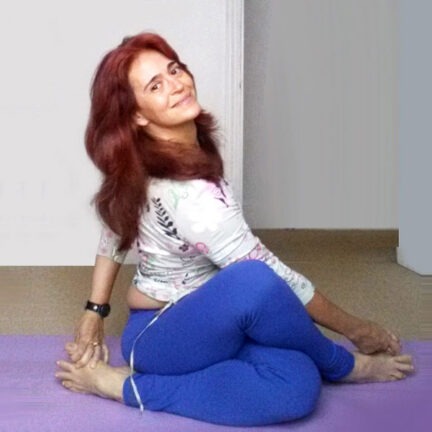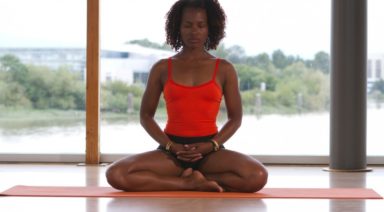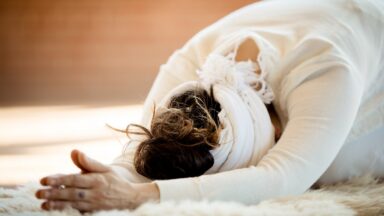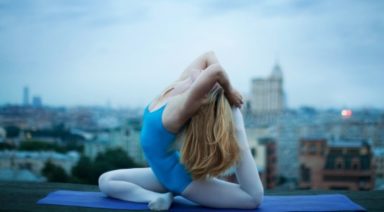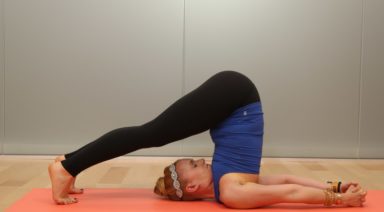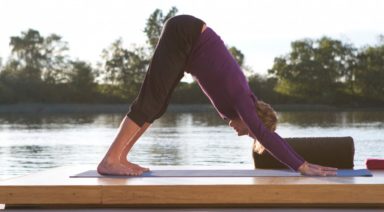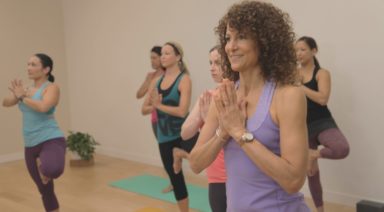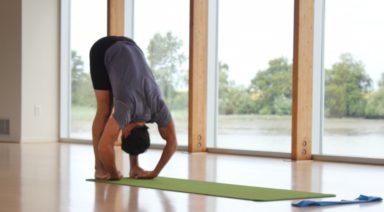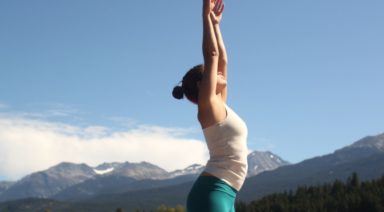How to Unite Body and Mind With Conscious Breath

“Feelings come and go like clouds in a windy sky. Conscious breathing is my anchor.”
As explained by the Vietnamese Zen Master, Thich Nhat Hanh, the breath is the key for calming us down, and bringing us back to our own center. In yoga, we believe that by creating a deep connection with ourselves, through conscious breath, we can achieve domain over ourselves. As you move in a yoga class, as you listen to the teachings and as you relax your breath — paying attention to what keeps you alive — you start the journey back home. You return to your peace and the ultimate nature of your mind.
Another wonderful yoga master, B.K.S. Iyengar, explains that yoga is an ancient but perfect science that deals with the evolution of humanity. This evolution includes all aspects of ones being, from bodily health to self-realization.
Yoga means union – the union of body with consciousness, and consciousness with the soul. Yoga can help you to maintain a balanced attitude in day-to-day life, and will endow you with skills you can use in the performance of many types of actions. When you do the yoga postures, you may reveal to yourself where you are resisting your natural state so that you can release and relax. It sounds complex, but at the same time it’s simple: you just need to start breathing and moving. Yoga is the balancing and joining together of our energy, mind and body.
If you’ve never tried yoga before, just one class will open you up to the different ways to experience stability, develop control over your emotions, gain more physical stamina, become more intuitive, focus and hopefully become more balanced in different situations in your daily life.
Give it a try, and see how your life will improve!
5 Reasons to Practice Breath of Fire Yoga

Kapalabhati Pranayama or “Cleaning Breath” is an intermediate to advanced pranayama that consists of short, powerful exhales and passive inhales. This practice is also known as the “Breath of Fire.” The exercise purifies the lungs and nasal passages. It is a powerful, one of a kind breathing exercise that will help the entire body.
Kapalabhati helps to make the motions of your diaphragm very easy and controlled. This helps it to discard the muscle cramps present in bronchial tubes. A lot of force is used to do this pranayama. While exhaling, the process is very strong and while inhaling, the process is very calming. It is a very energizing technique, and when done correctly it will reboot all your muscles. It is also a cleansing technique that places emphasis on cleaning the air passages and blockages in the chest.
Benefits
Cleanse Yourself of Toxic Air
Kapalabhati clears the body from the constant intake of toxins, thus detoxifying it. This technique helps to replace any toxic air with fresh air. The breathing mainly takes place from the abdomen, as opposed to the chest, and this specifically is what helps to remove the toxic air. Kapala means “the skull” and bhati means “brings lightness.” Breathing in this way lightens your skull by extracting problems like sinusitis. This is an invigorating and energizing practice as it fills your stuffy skull with fresh air.
The practice also improves bowel movements which rids the body of the many diseases.
Excellent for Respiratory Problems
It is also one of the best exercises for asthma patients and people suffering from respiratory problems. This stimulating breath can do wonders for every single tissue in your body. The breathing technique will invigorate your spine.
Increases Blood Circulation
It is also useful for maintaining blood pressure. The abdominal organs also become strengthened from the pressure applied to these organs while breathing and exhaling. It increases the blood circulation due to fresh supply of blood. It is also useful for removing impurities from the blood.
Tones Your Abdomen
The abdominal area is toned with the help of this breathing technique. It helps clear the entire nervous system which proves to be very useful in making the body fit.
Helps with Decision Making
A sense of calmness is also achieved due to the lightness of the skull. Kapalabhati helps one to think better and make decisions quickly while also keeping the mind alert. This is a wonderful breathing technique to help the mind and soul, as it helps to awaken the spiritual power which heals many problems facing many of us today.
Contraindications
It should also be noted that Kapalabhati Pranayama is not recommended for those who suffer from cardiac problems, hernia and spinal disorders. In addition, those who suffer from severe respiratory infections, colds and nasal obstruction should not perform this breathing and cleansing technique. Most physicians usually ask people suffering from high blood pressure and diabetes to refrain from performing this breathing technique. Those with abdominal ulcers should also avoid performing the technique. If you are pregnant, you should not practice this type of breathing exercise.
Since there are some Kapalabhati risks it is best to perform it only after consulting with a qualified yoga instructor who has practiced this breathing technique and is familiar with it.

